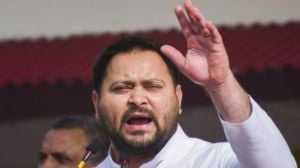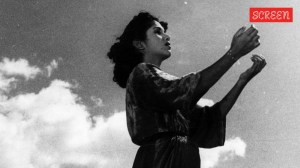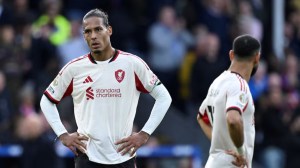When Pappu goes to vote
It’s the year of the general election. Expect Youngistan to prove pundits wrong

It’s the year of the general election. Expect Youngistan to prove pundits wrong
Interest in the young isn’t without a reason. Advertisers know when they have a winning slogan. ‘Youngistan’ is snapping at our heels and not just Rahul Dravid’s. Shah Rukh Khan is happy to play ‘Uncle’ to younger models in soft-drink ads. Even the Election Commission took on a very non-sedate variation of Pappu can’t dance saala in its aggressive campaign against apathetic voters. It is even rumoured to have worked.
According to the 2001 Census, 54 per cent of India today is below the age of 25. In another interesting projection, by current rates, in 2020, the age of the average Indian will be 29 years—37 will be the Chinese average and 45 the European.
The role of the young in politics is now a much discussed phenomenon. Whatever may be the other dynamics in the general elections due early in 2009, a wild card in the polls will be the young electorate. It will be the youngest ever since 1952 and for the first time, the majority on the electoral rolls will be between 18-34.
Recently, one of the most talked of images has been that of hundreds of candle-bearing young people marching in metros, condemning the politician as ‘useless’. How much can be expected of this young, and by all appearances, educated class to vote responsibly, or vote at all? But for all such shows of “democracy-through-TV-cameras”, a quick reality check were the recent state elections, which reported high voting percentages and at least temporarily laid to rest this spectre of the apathetic young voter.
“Indian Youth in a Transforming World : Attitudes and Perceptions”, a study conducted by CSDS (Centre for the Study of Developing Societies), Lokniti and Konrad Adenauer Stiftung has some interesting findings about young people. It found that “48 per cent of the youth seem to have a strong belief in democracy, only 2 per cent have a weak faith in democracy, and 27 per cent are meant to be indifferent.” The report also says that “66 per cent of the youth feel that their vote does make a difference to how things are run in this country”—conclusions which must make those who see youngsters as an undifferentiated gelatinous mass, cynical of processes and politics, to review their assumptions.
2009 is a ‘change year’ in many ways. With India going to polls at a difficult juncture in the subcontinent —other factors being a new regime in the US and the global slowdown—the government elected by Indians will matter, to us of course, but also to the world. Young voters will go to vote with all of this as background.
But what have political parties to offer the youth? The ruling Congress, by all indications, will try and embody as much of the youth aspirational connect in the image of 38-year-old Rahul Gandhi, even if there are no Prime Ministerial projections. The main opposition party, the BJP, which has already declared 82-year-old Lal Krishna Advani as the ‘PM-in waiting’, may have to think quickly and think smart to counter the Congress’ talk of being “the future”.
The other smaller parties, even if not always openly acknowledged, are actually very much at the cusp of change or have changed already. BSP’s Mayawati is in her early fifties, the DMK has patriarch Karunanidhi anxious, as he is in the process of passing on the baton to his successor. The CPM has already effected a change to a younger leadership (in Indian political terms). Even the CPI has its succession plan laid out and made public—likewise for the NCP or even the SP (even if that means a straight filial handing of charge).
So, what do we expect from the ‘youth’? Can they morph into a separate vote category like the way ‘caste’, ‘religion’ or ‘region’ are? That’s when life gets even more interesting—they can, and they can’t. By virtue of being young, they bring in a vibrancy, impatience and novelty in what they expect from parties and their representatives. But in many ways, as what a lot of surveys have found, they respond to situations not just as ‘young’, but also as middle-Indian towners or metro-residents, rural or urban, upper caste or Dalit, educated or uneducated, Hindu or Muslim, rich or poor.
So, the final choice they exercise is as complex and hard to predict as anything else. But what is guaranteed is that it will be new. It is not clear if politicians like anything ‘new’ which forces them to rethink well-rehearsed plots—so it may be even harder to plan for this ‘new-cum-old’ voter. So it may just be, back to the future. We will know, soon enough.



- 01
- 02
- 03
- 04
- 05




























